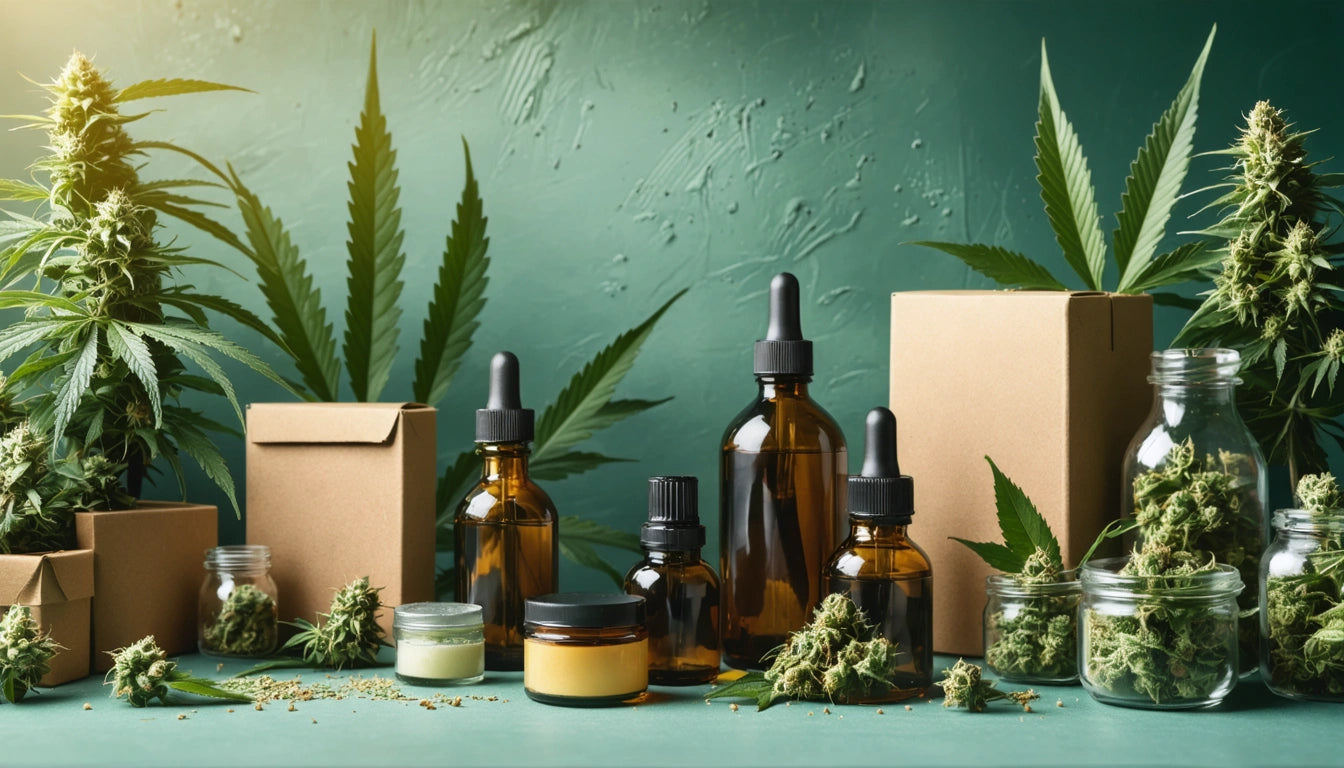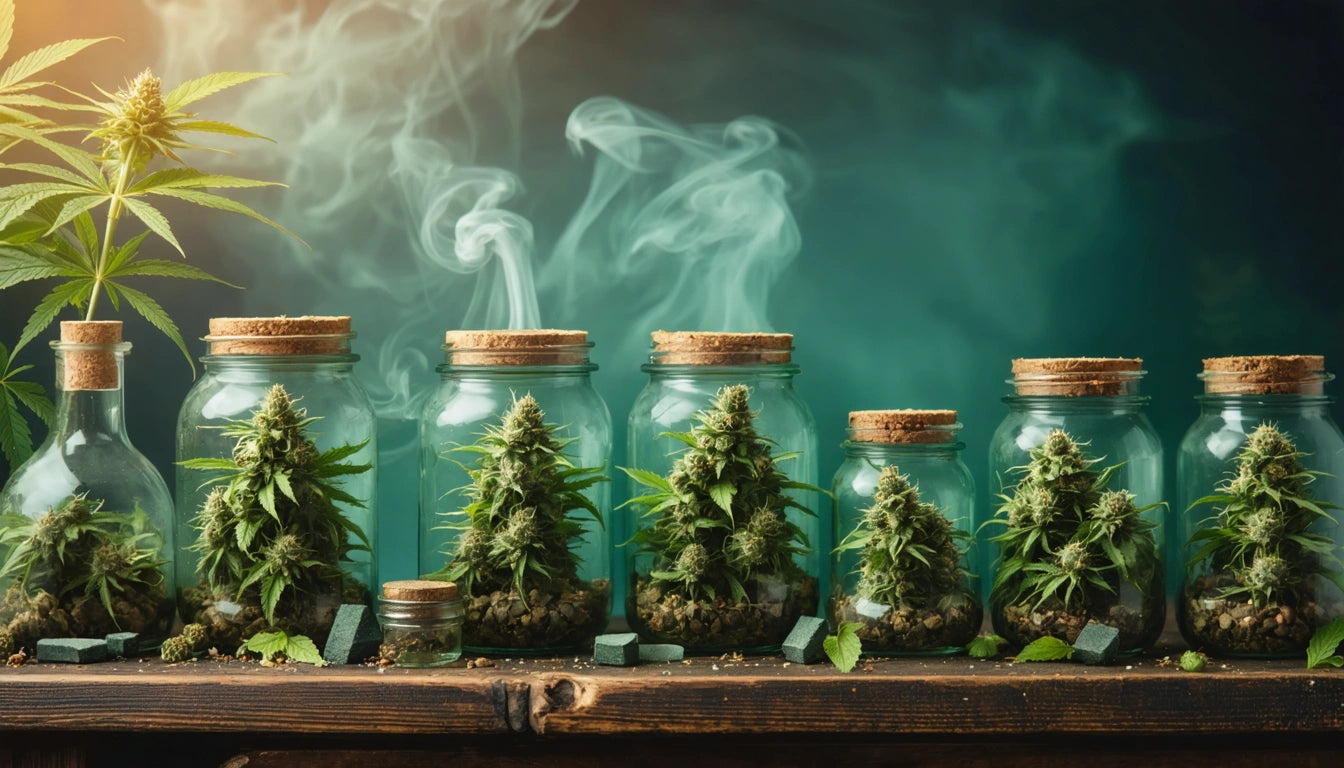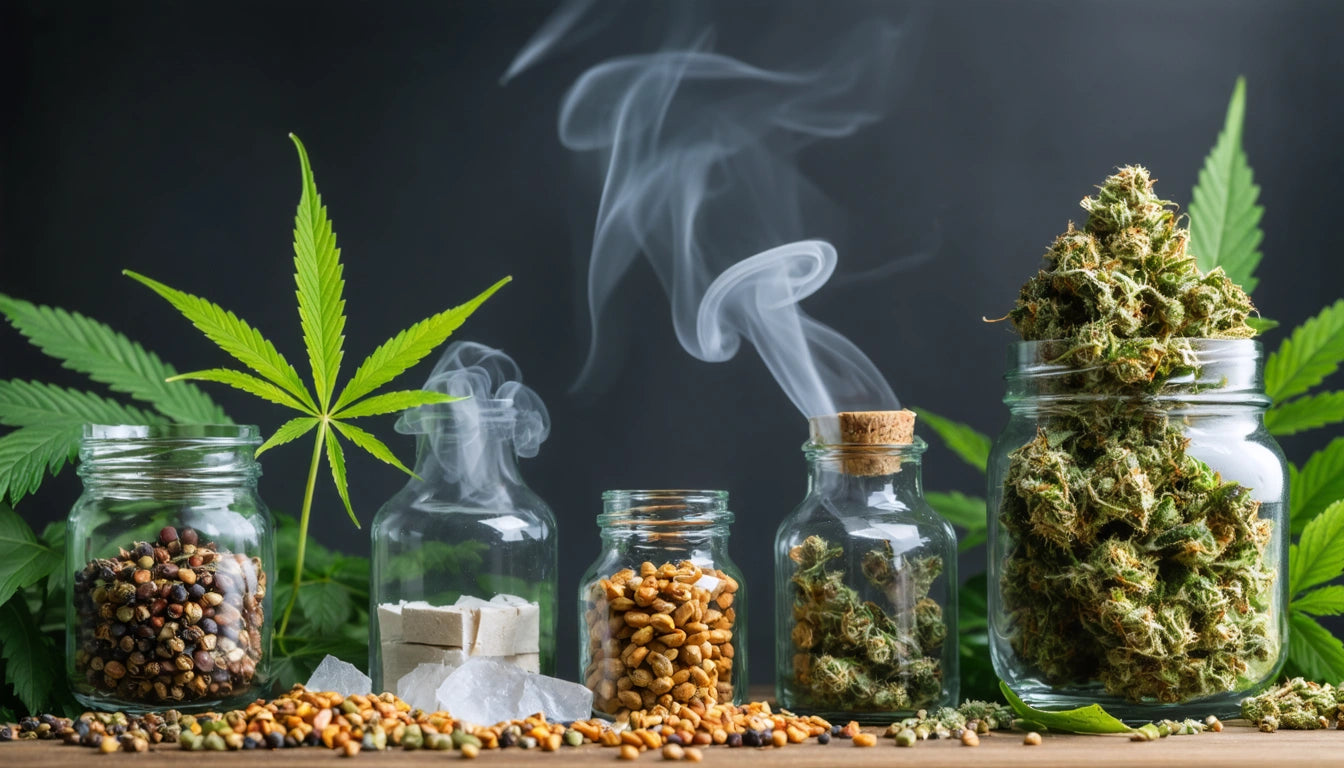Designing Packaging for Product Longevity on Shelves
In the cannabis industry, product freshness and potency directly impact consumer satisfaction and brand reputation. Effective packaging design goes beyond aesthetics to become a critical preservation tool that extends shelf life and maintains product integrity from production to consumption.
Understanding Product Degradation Factors
Cannabis products face multiple degradation threats that properly designed packaging must address. Light exposure, particularly UV radiation, accelerates cannabinoid breakdown, converting THC to less potent compounds. Oxygen exposure leads to oxidation, which degrades terpenes and alters flavor profiles. Humidity fluctuations can cause either drying or mold growth, while temperature variations accelerate chemical degradation processes.
According to research on packaging design and shelf life, these environmental factors can reduce product potency by up to 16% in just one month without proper protection.
Material Selection for Maximum Shelf Life
The foundation of preservation-focused packaging begins with material selection. Different cannabis products require specific protective properties:
Glass Containers
Glass offers superior oxygen barrier properties and inert chemical interaction, making it ideal for concentrates and premium flower. Amber or opaque glass provides additional UV protection, though weight and fragility present logistical challenges.
Mylar and Multilayer Films
Metallized films create exceptional barriers against light, oxygen, and moisture. Our heavy-duty mylar storage solutions utilize multiple protective layers to maintain product freshness for bulk storage needs, particularly for flower products requiring long-term preservation.
Modified Atmosphere Packaging
Advanced packaging systems that replace oxygen with nitrogen can significantly extend shelf life by preventing oxidation. This technology is particularly valuable for preserving terpene profiles in premium products.
Barrier Technologies and Protective Features
Beyond base materials, specific barrier technologies enhance preservation capabilities:
- Oxygen scavengers that actively remove residual oxygen within packaging
- Moisture regulators that maintain optimal humidity levels
- UV inhibitors integrated into plastic components
- Antimicrobial films that prevent mold and bacterial growth
- Tamper-evident features that maintain package integrity
These technologies work together to create a protective microenvironment that shields products from degradation factors. As outlined in this comprehensive guide on shelf longevity, integrating multiple barrier properties often provides synergistic protection.
Balancing Preservation with Sustainability
The challenge for modern cannabis packaging designers lies in balancing preservation needs with sustainability concerns. Excessive packaging materials may provide superior protection but generate unnecessary waste. Innovative approaches include:
Biodegradable barrier films derived from plant cellulose that maintain protective properties while reducing environmental impact. Recyclable glass and aluminum containers designed for reuse through return programs. Minimalist designs that achieve protection with less material through structural engineering rather than material quantity.
Brands increasingly seek packaging partners who can navigate this balance, providing solutions that extend shelf life without excessive environmental costs.
Implementing Shelf Life Testing Protocols
Effective packaging design requires verification through rigorous testing. Accelerated aging tests expose packaged products to intensified conditions that simulate extended storage periods. Real-time stability testing monitors products in actual storage conditions over their intended shelf life. Permeation testing measures oxygen, moisture, and light transmission rates through packaging materials.
These protocols help brands quantify shelf life expectations and make informed decisions about packaging investments based on projected distribution timelines and storage conditions.
Packaging Innovations Driving Extended Product Freshness
The future of cannabis packaging focuses on intelligent preservation systems that adapt to environmental conditions. Time-temperature indicators visually display cumulative temperature exposure, alerting consumers to potential quality issues. Oxygen indicators change color when package integrity is compromised. Smart packaging with NFC or RFID technology allows real-time monitoring of environmental conditions throughout the supply chain.
These innovations represent the next evolution in shelf life extension, moving beyond passive barriers to active monitoring and protection systems. For brands seeking competitive advantage, these technologies offer significant differentiation in increasingly crowded marketplaces.
When designing packaging for cannabis products, preservation capabilities should be considered from the earliest concept stages. Material selection, barrier technologies, and structural design all contribute to creating an effective shield against degradation factors. By investing in preservation-focused packaging design, brands protect not just their products, but also their reputation for quality and consistency.











Leave a comment
All comments are moderated before being published.
This site is protected by hCaptcha and the hCaptcha Privacy Policy and Terms of Service apply.